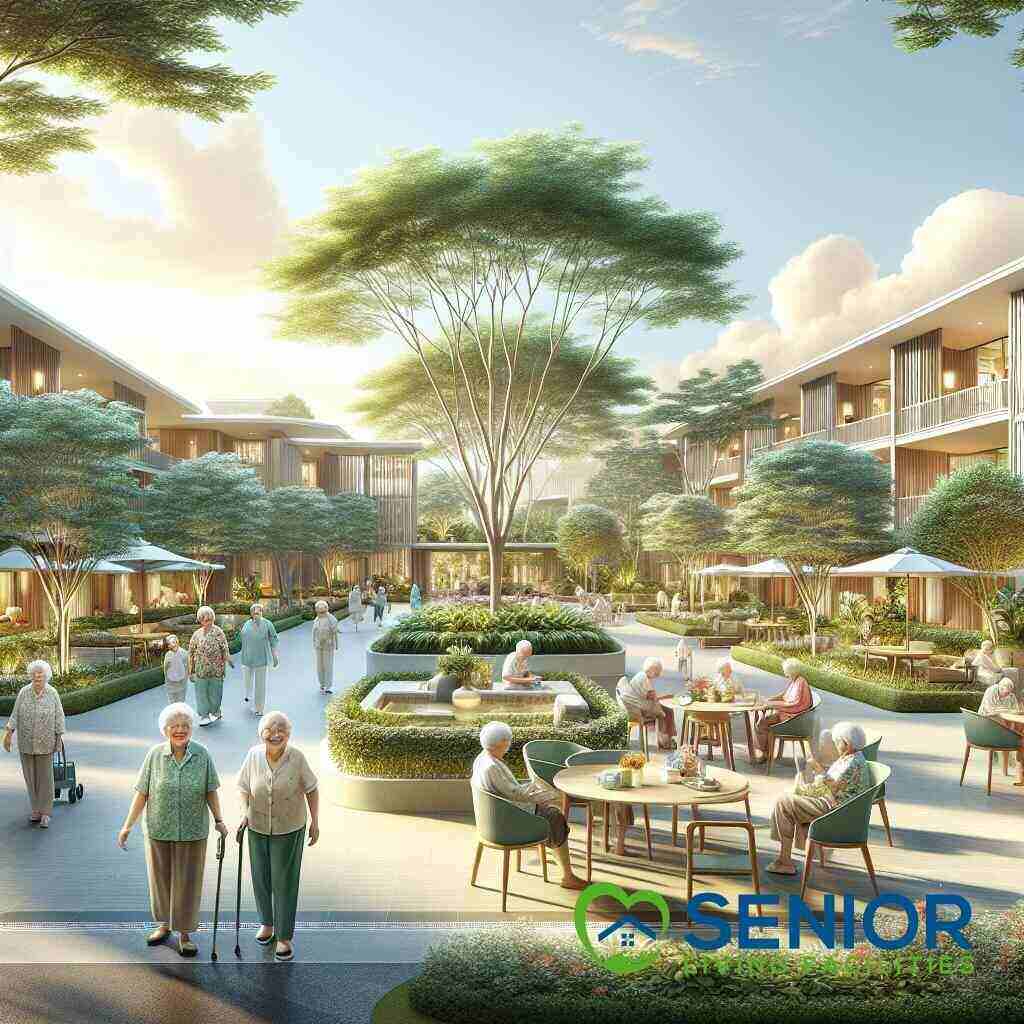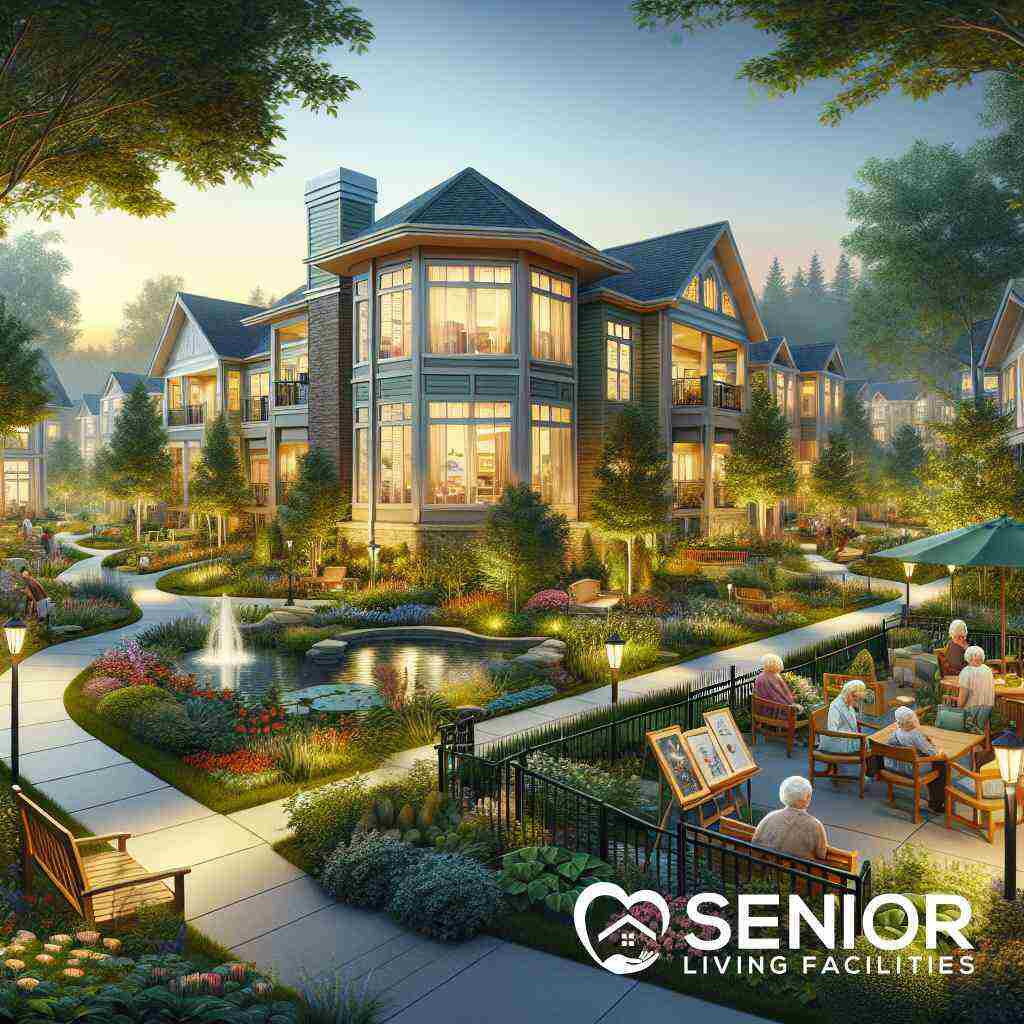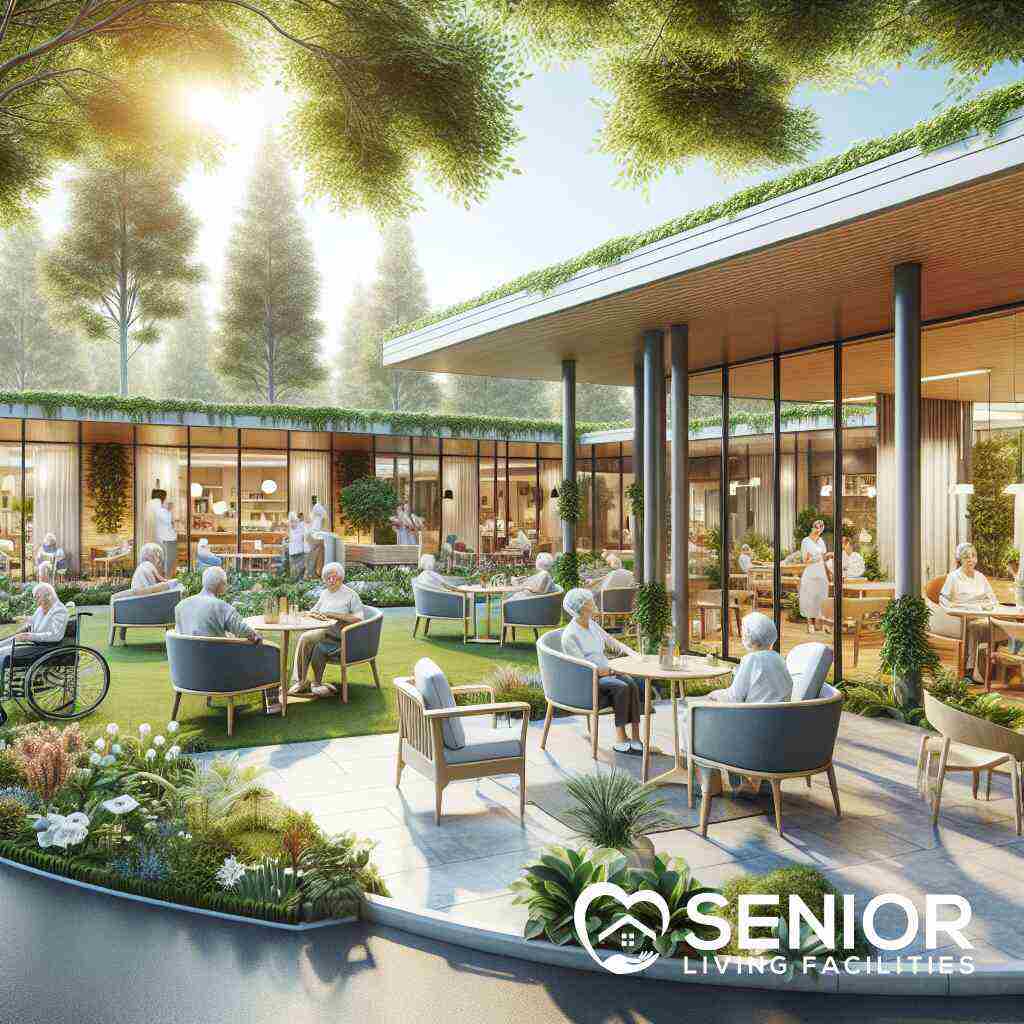
What is Assisted Living? A Clear Guide for Families
June 23, 2024
Understanding Assisted Living
Defining Assisted Living
Assisted living represents a crucial segment within the spectrum of senior care, providing an environment that blends independence with the right level of support for daily activities. This setting is ideal for seniors who require assistance with tasks like bathing, dressing, and medication management but do not need the intensive care provided by nursing homes. Assisted living communities offer a structured environment designed to foster independence, yet with the safety net of professional support readily available. These facilities prioritize a sense of community and individual well-being, ensuring residents receive personalized care tailored to their specific needs.
The Evolution of Assisted Living
The concept of assisted living has evolved significantly over the years, transitioning from one-size-fits-all care models to more nuanced and personalized approaches. Initially, senior care was heavily skewed toward medical support in clinical environments. However, as understanding of senior needs deepened, the focus shifted to creating more homelike settings that encourage autonomy while still providing necessary health and daily living support. This evolution reflects changing societal values around aging and senior care, emphasizing dignity, respect, and quality of life for seniors. Advances in care practices and facility design have further contributed to making assisted living a preferred option for many seniors and their families.
Assisted Living vs. Other Senior Care Options
Assisted living facilities distinguish themselves from other senior care options through their unique blend of independence and support. Unlike nursing homes, which offer extensive medical care, assisted living focuses on assisting residents with daily living activities in a less clinical, more home-like setting. This is different from independent living communities, which are ideal for seniors who can live independently but wish to do so in a community with others in their age group and without the burden of home maintenance. Assisted living offers a middle ground, providing personal care services, community engagement, and peace of mind for both residents and their families.
When comparing assisted living to in-home care, the difference lies in the community aspect and available facilities. Assisted living communities offer immediate access to care, socialization opportunities, and a variety of amenities, which in-home care cannot always match. However, choosing between these options depends on the individual’s needs, preferences, and financial considerations. Understanding the distinct features and benefits of assisted living helps families make informed decisions about the best care option for their loved ones.
For those navigating the myriad of senior care options, What is assisted housing exactly – a clear explanation offers a deeper insight into how assisted living stands out as a viable and beneficial choice for many seniors seeking a balance between independence and support.
The Benefits of Choosing Assisted Living
Enhanced Safety and Security
One of the paramount advantages of opting for an assisted living setting is the enhanced safety and security features designed to cater to seniors. Communities for seniors 55+ prioritize environments where safety measures are seamlessly integrated into daily living, without compromising residents’ independence. These facilities are equipped with secure entrances and exits, emergency call systems in each residence, well-lit common areas, and safety bars in bathrooms. Moreover, staff members are trained to assist in emergencies, ensuring a rapid response whenever needed. This infrastructure and preparedness offer peace of mind to both residents and their families, knowing that a safe and responsive environment surrounds their loved ones.
Professional Health and Wellness Support
Assisted living communities go beyond just emergency responses and safety features,they offer comprehensive health and wellness programs tailored to each resident’s needs. This support ranges from medication management to regular health assessments and coordination with healthcare providers. Assisted living plans include access to on-site or readily available healthcare professionals like nurses, physical therapists, and nutritionists. These specialists are integral in developing personalized care routines that promote health, mobility, and independence. By focusing on preventative care and daily wellness, assisted living facilities ensure that seniors maintain the highest possible quality of life, addressing health concerns proactively rather than reactively.
Social Connections in Assisted Living Communities
An often-overlooked advantage of assisted living is the rich social environment it offers, which can greatly enhance a senior’s quality of life. Living in a community setting fosters connections between residents, providing daily opportunities for social interaction, group activities, and shared experiences. From group exercise classes and art workshops to communal dining and educational courses, assisted living facilities are designed to keep residents engaged, active, and socially connected. These communities understand the importance of social well-being in overall health, making it a priority to create vibrant settings where seniors can form new friendships and enjoy a fulfilling social life. This social aspect, coupled with professional care and support, makes assisted living a comprehensive solution for seniors seeking a balanced and enriching lifestyle.
What Services and Amenities to Expect
Daily Living Support and Personal Care
Assisted living communities are designed to support seniors who may require assistance with daily activities while promoting as much independence as possible. Daily living support commonly covers help with personal care needs such as bathing, dressing, eating, and mobility. Furthermore, these communities offer services like housekeeping, laundry, and medication management, ensuring residents live safely and comfortably. The goal is to provide a nurturing environment where seniors receive the care they need, tailored to their individual needs and preferences. This personalized care is what sets assisted living plans apart, ensuring each resident’s dignity and autonomy are upheld.
Meal Plans and Dietary Management
Nutrition plays a critical role in the health and well-being of seniors. Assisted living communities recognize this by offering meal plans that are not only nutritious and delicious but also cater to the dietary needs and preferences of their residents. Dining programs typically feature a variety of menu choices, including accommodations for special diets such as low-sodium, diabetic, or heart-healthy options. These meals are prepared by professional chefs and are designed to offer balanced nutrition while promoting social interaction among residents during meal times. Choosing assisted housing amenities that enhance day-to-day life, such as these dining experiences, can significantly contribute to a senior’s quality of life.
Recreational and Social Activities
A vibrant assisted living community offers a wide array of recreational and social activities geared toward keeping residents engaged, active, and socially connected. These can range from fitness and wellness programs to creative arts, educational classes, and social clubs. Outdoor excursions, cultural events, and holiday celebrations are also commonly organized to enrich the lives of residents. This focus on recreational and social activities is essential for fostering a sense of community and belonging, preventing isolation, and promoting mental and physical wellness among seniors.
Emergency Response and Medical Care
Safety and well-being are paramount in assisted living communities, with 24/7 emergency response systems in place to ensure that residents can quickly access help when needed. Many facilities also offer on-site or closely coordinated medical care, including regular health monitoring, access to skilled nursing, and physical therapy. This comprehensive approach to health and emergency care ensures that residents and their families have peace of mind, knowing that professional assistance is always at hand.
Costs and Financing Assisted Living
Understanding Assisted Living Costs
The cost of assisted living varies widely depending on geographical location, the size of the living accommodation, and the level of care required. On average, monthly fees for assisted living facilities can range from $2,500 to $5,000, with some areas and luxury communities significantly higher. These fees generally cover room and board, basic utilities, daily meals, and access to care and support services. However, additional services such as specialized healthcare, transportation, and personal care may incur extra charges. Understanding these costs is crucial for families planning for the transition to senior living facilities, as it helps in identifying the amenities and services most important to their loved one’s well-being and comfort.
Exploring Payment and Assistance Options
Funding assisted living can be challenging, but several resources can help offset the cost. Long-term care insurance, veterans’ benefits, reverse mortgages, and life insurance policies are some options that individuals may use. Some states also offer Medicaid programs to cover part of the costs, though eligibility and covered services vary widely. Private pay, such as savings, pensions, and family support, often plays a significant role in financing assisted living. Exploring payment and assistance options is a necessary step in the process, providing clarity on how to manage expenses and ensuring that seniors can afford the care they need without compromising on quality.
Financial Planning for Assisted Living
Effective financial planning for assisted living involves understanding current savings, income, and potential benefits that could be applied toward care costs. Consulting with a financial planner who has experience in senior care funding can provide valuable insights and help develop a comprehensive plan that considers various factors, including anticipated increases in care costs over time. Families should also consider legal planning, such as establishing power of attorney and creating a living will, to ensure decisions align with their loved one’s wishes. Planning ahead not only alleviates the financial burden but also provides peace of mind knowing that resources are in place to support ongoing care needs in senior living environments.
Finding the Right Assisted Living Facility
Assisted Living Locator Services
Navigating the landscape of assisted living options can be daunting for families and seniors. Fortunately, assisted living locator services offer a specialized resource for simplifying this process. These services provide a bridge between seniors in need of assisted living and the facilities that offer the kind of care and environment they require. Utilizing a sophisticated database of senior living communities, locator services can filter options based on specified criteria such as location, budget, care needs, and preferred amenities. Senior Living Facilities, through its intuitive platform, functions as an effective assisted living locator, helping families and seniors pinpoint communities that align with their needs and preferences. This not only saves time but also ensures that the choices presented are vetted, reputable, and closely match the unique requirements of each senior.
Important Factors When Choosing a Facility
Choosing the right assisted living facility involves consideration of several key factors to ensure that it meets the specific needs of your loved one. When weighing options, it’s crucial to look at the level of care provided and whether it can adapt to changing needs over time. Care levels in senior living can vary greatly, from minimal assistance with daily activities to more comprehensive medical and personal care. Equally important is the living environment,the facility should be not only safe and clean but also conducive to residents’ happiness and well-being. Additionally, consider the meal plans, social and recreational activities, staff qualifications, and the overall community atmosphere. Cost is also a major consideration, as you’ll want to find a facility that fits your budget while still meeting care needs. Exploring the right senior living facility means evaluating these crucial factors to find a balance between quality of care, lifestyle, and affordability.
Visiting and Assessing Potential Facilities
Visiting and assessing potential assisted living facilities is an essential step in the selection process. These visits allow families and their loved ones to observe firsthand the living conditions, interact with staff and residents, and get a sense of the community’s atmosphere. When visiting, pay close attention to cleanliness, safety measures, and the general mood among residents. Is there a sense of community and contentment, or do residents seem isolated? Assess the dining area and food quality, check out the available amenities, and ask about activity schedules. It’s also vital to understand how the facility manages health and wellness, including medication management, emergency response, and accessible healthcare services. Engaging in these visits with a prepared list of questions and observations can help families make an informed decision, ensuring the chosen senior living community aligns with their loved one’s needs and preferences for a comfortable and fulfilling living experience.
Assisted Living for Specific Needs
Assisted living communities aim to cater to a diverse range of needs, ensuring that every senior resident receives personalized care. As the population of senior adults becomes more varied, so too does the range of services offered by these communities. This section explores the specific needs that can be addressed within assisted living environments, including memory care, accommodations for seniors with disabilities, and considerations for cultural and religious inclusivity.
Memory Care in Assisted Living
Memory care is a specialized form of assisted living designed for individuals with memory impairment, such as Alzheimer’s disease and other forms of dementia. Facilities offering memory care go beyond the typical support found in standard assisted living by providing a secure environment that reduces the risk of wandering and ensures round-the-clock supervision. The staff in memory care units are trained in dementia care, understanding how to navigate the complexities of memory loss with compassion and professionalism.
Programming in these units is tailored to stimulate cognitive abilities and maintain as much independence as possible. Activities are designed to engage residents and may include memory games, music therapy, and other therapies aimed at slowing the progression of cognitive decline. Memory care units often feature unique design elements, such as simple layouts and visual cues, to help residents navigate their living spaces more easily.
For families exploring options that safeguard their loved one’s well-being while addressing the challenges of memory loss, memory care within an assisted living community offers a supportive and understanding environment. More information on these specialized services can be found here, providing insights into how these communities enrich the lives of residents with cognitive impairments.
Assisted Living for Seniors with Disabilities
Assisted living communities are increasingly equipped to support seniors with physical disabilities, offering accessible facilities and personalized care plans. Living spaces and common areas are designed with accessibility in mind, featuring wide doorways, ramps, and grab bars to ensure that all residents can move freely and safely. Adaptive technologies and equipment, such as stairlifts and emergency call systems, enhance independence for residents with mobility challenges.
Care plans for seniors with disabilities are customized to meet their specific needs, ensuring they receive the necessary assistance with daily activities and healthcare management. The collaborative approach between residents, families, and facility staff aims to maximize independence while providing the necessary support to manage disability-specific challenges.
Cultural and Religious Considerations in Assisted Living Selection
Choosing an assisted living community is a deeply personal decision that often involves considerations of cultural and religious beliefs. Many communities acknowledge the importance of these factors and strive to create an inclusive environment that respects diverse backgrounds. This can manifest in various ways, from offering dietary options that align with religious observances to hosting cultural events and celebrations that reflect the heritage of their residents.
Moreover, some assisted living facilities go further by providing spaces for worship and reflection, as well as facilitating services and activities that allow residents to practice their faith and maintain their cultural traditions within the community. For families for whom these considerations are especially important, finding a community that actively embraces diversity and offers respect and support for cultural and religious practices can significantly impact their loved one’s happiness and sense of belonging.
Preparing for the Transition to Assisted Living
Emotional and Psychological Readiness
Transitioning to assisted living is an emotional journey, not just for seniors but for their entire family. It represents a significant change in lifestyle, routines, and often in personal identity. Therefore, emotional and psychological readiness is essential. To prepare, it’s important to involve your loved one in discussions about the move early on, acknowledging their feelings and concerns. Emphasizing the positive aspects, such as increased social opportunities, easier living conditions, and personalized care, can help alleviate apprehension.
Creating a plan that includes visits to potential communities, meeting with staff, and understanding the daily life within these settings can also ease the emotional burden. Participation in decisions empowers seniors, making the transition smoother. Additionally, consulting with a counselor or therapist who specializes in geriatric care can provide emotional support and coping strategies during this period. This readiness isn’t achieved overnight,it requires patience, understanding, and open dialogue.
Planning the Move: What to Bring
Planning the move to an assisted living community involves more than just packing boxes. It’s about selecting items that will make your loved one’s new environment feel like home while fitting into a typically smaller living space. Start by carefully choosing personal items that hold significant meaning, such as family photos, favorite books, or small pieces of furniture. Remember, the goal is to recreate a familiar and comforting atmosphere.
It’s also practical to include everyday items that promote independence, such as easy-to-use electronics, clothing, and personal care products. However, consult with the assisted living community for specific guidelines on what items are provided and what space limitations may exist. Organizing belongings early, and involving your loved one in the decision-making process, helps in visualizing their new space, making the transition less overwhelming.
Supporting Your Loved Welfare Through the Transition
Support doesn’t end once the moving trucks pull away,it’s crucial throughout the adaptation period to the new living environment. Maintaining a regular visitation schedule helps reassure your loved one that they are not ‘left behind,’ but rather starting a new chapter with your full support. Active involvement in their care planning, attending community events together, and encouraging them to participate in social activities can also aid in their adjustment.
Listening to their experiences, challenges, and achievements in the new setting allows you to provide emotional support and advocacy when necessary. It’s also beneficial to establish communication with the assisted living staff to stay informed about your loved one’s adjustment and health status. Finally, fostering a positive attitude towards this change encourages seniors to embrace their new community and can significantly improve their quality of life.
Rights and Advocacy in Assisted Living
Resident Rights and Protection
Within the realm of assisted living, the dignity, autonomy, and rights of residents are paramount. Every individual moving into an assisted living community retains their rights as citizens, including privacy, voting, and freedom of association. These facilities are designed to be more than just places of care,they’re environments where seniors can lead fulfilling lives with respect and dignity. Federal and state laws are in place to protect these rights, ensuring that residents are treated with the utmost respect. For instance, the residents have the right to manage their own finances, make personal decisions regarding social and religious activities, and receive or refuse medical treatment or personal care. Ensuring these rights are not only recognized but also protected, is central to the ethos of high-quality assisted living.
Advocacy Groups and Resources
Advocacy groups play a critical role in safeguarding the interests and rights of assisted living residents. These organizations work tirelessly to ensure that seniors living in senior homes have access to the resources, care, and support they need. The National Long-Term Care Ombudsman Program, for example, operates across the United States, providing a platform for residents and their families to voice their concerns. Ombudsmen are trained to resolve conflicts and advocate for improvements in the quality of care, respect for residents’ rights, and positive changes in policies affecting seniors in assisted living communities. Other resources include the National Center on Elder Abuse and the Assisted Living Federation of America, which offer guidance, support services, and advocacy for policy changes to enhance living conditions and protect the rights of seniors.
Navigating Concerns and Complaints
Despite best efforts, there may be times when residents or their families have concerns or complaints about the care received in an assisted living facility. It is important for residents and their loved ones to understand how to navigate these challenges effectively. Firstly, communication with management staff or caregivers about any concerns should be the initial step, as many issues can be resolved through direct dialogue. If necessary concerns are not adequately addressed, escalating the issue to the facility’s administration or engaging the services of an ombudsman might be necessary. Furthermore, legal advice may be sought, especially if there are concerns around breaches of resident rights or care standards. Knowing the proper channels for airing grievances and seeking resolution is essential for ensuring that assisted living remains a positive and supportive environment for all residents.
Conclusion: Embracing a New Chapter
The Positive Outlook of Assisted Living
Embracing assisted living marks the beginning of a new, enriching chapter for seniors and their families. With assisted living, individuals gain not just support with daily activities but a vibrant community geared towards enhancing their quality of life. The transition to this level of care often brings with it a plethora of advantages, including increased social interaction, personalized care, and a secure environment tailored to seniors’ unique needs. This chapter opens up avenues for seniors to explore new hobbies, form meaningful relationships, and enjoy a sense of community, all while having their health and wellness needs meticulously cared for. Assisted living isn’t just about receiving health aid,it’s about thriving in an environment designed with the senior’s best interests at heart.
Continual Support from Senior Living Facilities
Senior Living Facilities remains steadfast in its commitment to guide families and seniors through the often-complex process of finding the perfect assisted living community. With a comprehensive database that spans all 50 states, our platform simplifies the search for a community that aligns with each individual’s needs and preferences. From handling the nuances of care requirements to ensuring a seamless transition into senior living, our team offers continual support every step of the way. Whether it’s understanding the specifics of assisted living plans or identifying the right level of care, Senior Living Facilities is dedicated to empowering families with the knowledge and resources necessary to make informed decisions. Our goal is to ensure that every senior feels valued, cared for, and part of a community that resonates with their life’s stories and preferences.
How to Stay Involved in the Assisted Living Capital
Life in an assisted living community is dynamic and full of opportunities for engagement and growth. Families play a crucial role in ensuring their loved ones continue to feel connected and valued during their stay. Staying involved can take many forms, from regular visits and participation in community events to leveraging technology for daily communications. Many assisted living communities encourage family members to be a part of care planning meetings, offering insights into their loved one’s preferences and helping tailor the care experience. Additionally, volunteering for activities or special events can be a rewarding way to contribute to the community’s vibrancy. By maintaining an active presence in your loved one’s assisted living community, you underscore the notion that moving to senior living is not a step back but a step forward into a supported, engaging lifestyle.
Embracing assisted living is a journey filled with support, enrichment, and community. Senior Living Facilities is honored to be a trusted partner for families navigating this important stage, providing the resources, advice, and encouragement needed to make this transition a positive experience.
Frequently Asked Questions
Question: What essential amenities can families expect from the assisted living communities featured by Senior Living Facilities?
Answer: Families exploring assisted living options with Senior Living Facilities can look forward to a comprehensive range of amenities designed to enhance the comfort and well-being of their loved ones. Our partnered communities offer daily living support that covers assistance with personal care activities such as bathing, dressing, and eating. In addition, meal plans and dietary management are carefully curated to cater to the nutritional needs and preferences of seniors, ensuring that meals are not only healthy but enjoyable too. Recreational and social activities form a core part of the experience in these communities, with a variety of programs aimed at keeping residents engaged, active, and socially connected. From fitness classes and art workshops to social outings and cultural events, there is always something to enrich the lives of residents. Safety and security are also paramount, with facilities equipped with emergency call systems, secure entrances, and a trained staff ready to respond to any situation. By choosing a community through Senior Living Parsilitis, families can be assured of finding a senior living facility that offers a well-rounded and fulfilling living experience for their elderly loved ones.
Question: How does Senior Living Facilities help families navigate the costs and financing of assisted living?
Answer: Senior Living Facilities understands that navigating the costs and financing options for assisted living can be overwhelming for many families. That’s why we offer personalized guidance and resources to help families understand assisted living costs, which typically include room and board, basic utilities, daily meals, and access to personalized care. Our platform provides insights into exploring payment and assistance options such as long-term care insurance, veterans’ benefits, reverse mortgages, and Medicaid programs in some states. Additionally, we encourage consulting with financial planners and exploring private pay options like savings and family support. Through our comprehensive approach, we aim to make the financial planning for assisted living transparent and manageable, ensuring families can find a senior living option that fits their budget without compromising on the quality of care and services their loved ones receive.
Question: What sets assisted living apart from other senior care options, according to the guide ‘What is Assisted Living? A Clear Guide for Families’?
Answer: The guide ‘What is Assisted Living? A Clear Guide for Families’ from Senior Living Facilities highlights the unique blend of independence and support that sets assisted living apart from other senior care options. Unlike nursing homes, which provide extensive medical care, assisted living focuses on helping seniors with daily living activities in a less clinical, more home-like environment. This offers a significant advantage for seniors who don’t require constant medical attention but could benefit from assistance with personal care tasks, social activities, and health management. Furthermore, assisted living facilities prioritize community engagement, offering a wide range of social, recreational, and educational programs to foster personal connections and enhance the quality of life for residents. By choosing assisted living through Senior Living Facilities, families can trust that their loved ones will enjoy a perfect balance of independence and support, access to personalized care, and opportunities to stay engaged and connected within a vibrant community.
Question: How do Senior Living Facilities ensure the right match between seniors and assisted living communities?
Answer: Senior Living Facilities utilizes a sophisticated assisted living locator service to ensure a tailored match between seniors and assisted living communities. Our process begins with understanding the individual needs, preferences, and budget considerations of each senior and their family. Utilizing our extensive database of assisted living options, we filter communities based on these specified criteria, including care levels, location, amenities, and cultural and religious considerations. Our team offers continual support, from providing detailed information on selected facilities to arranging visits and helping with the transition process. By prioritizing a personalized approach, we help families and seniors pinpoint communities that not only meet their care requirements but also resonate with their personal preferences and lifestyle choices. This careful matchmaking process reflects our commitment to helping every senior find an assisted living community that feels like home.




